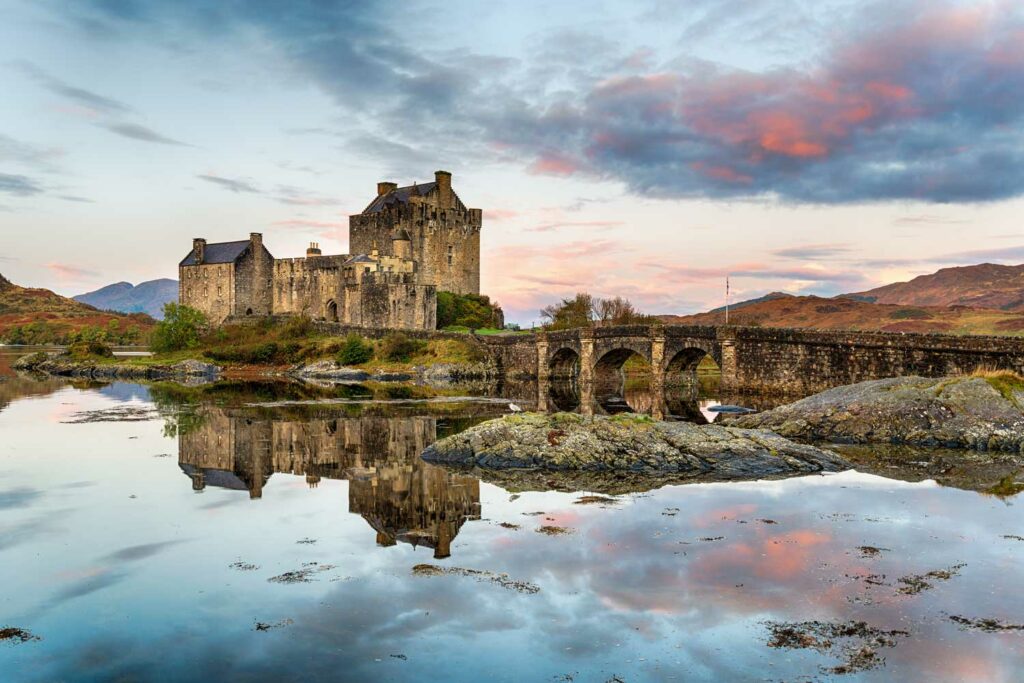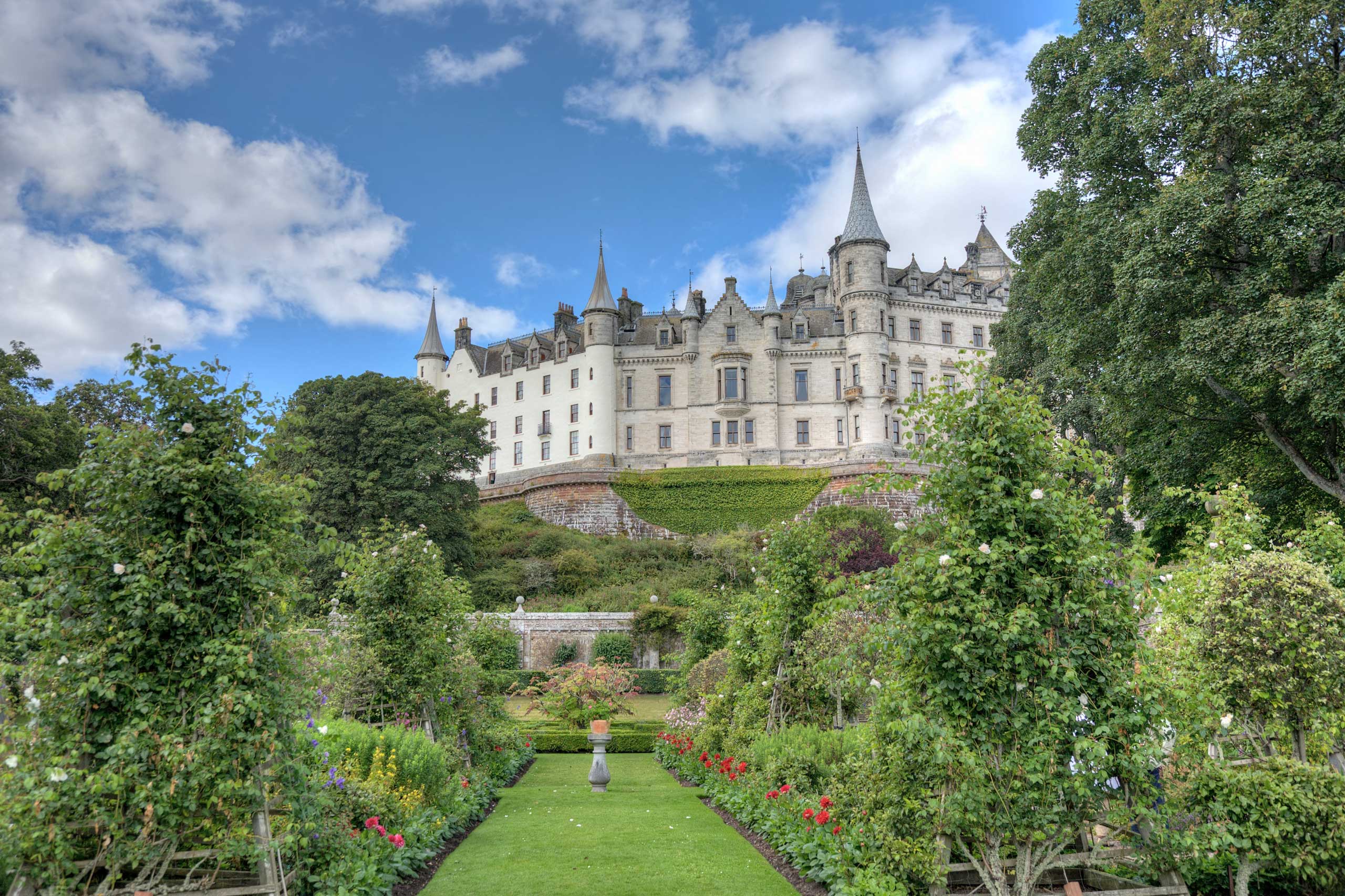From the quintessential to the quirky, the resplendent to the ruinous, there’s no shortage of castles to discover along the North Coast 500. Although not an exhaustive list, we’ve set out a selection of our personal highlights along this scenic route through the Scottish Highlands.
Inverness
In the Highland capital, the start and end point of the route, Inverness Castle sits atop a hill overlooking the River Ness. A relative newcomer on the castle scene, the current structure dates from 1836 and had, until recently, housed the Sherriff Court. However, a series of castles have stood on this site since 1057 with an accompanying history of sieges and skirmishes and, notably, Mary Queen of Scots was refused entry on one mutinous occasion. The castle is currently undergoing a refurbishment and is set to re-open in 2025 as a visitor centre celebrating Highland landscape, culture and heritage.
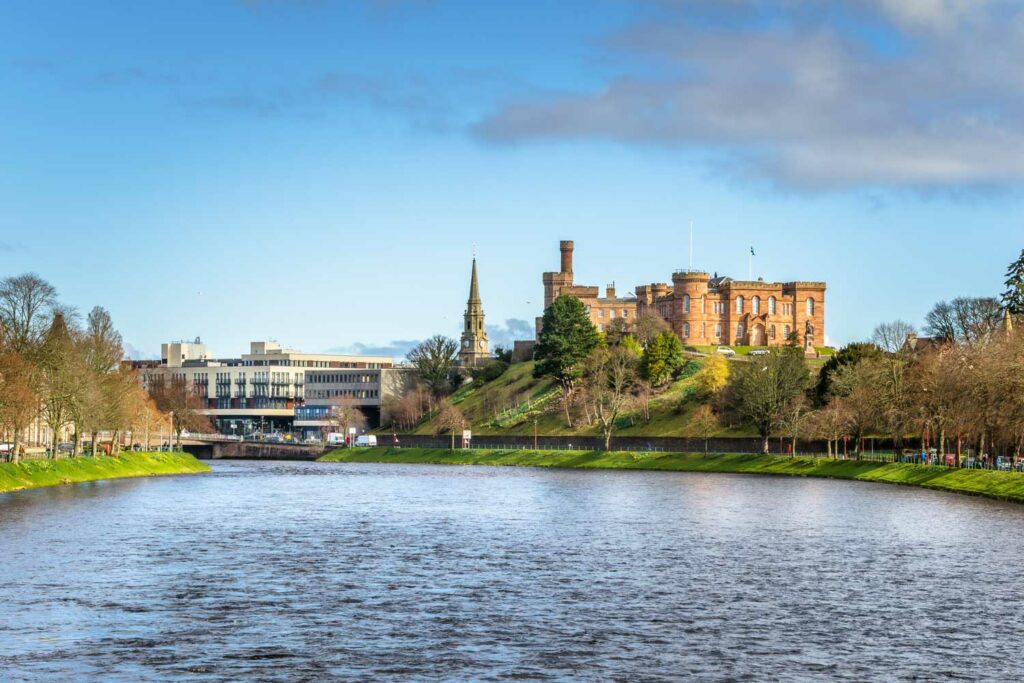
Skelbo
Although little remains of the ruins of the 14th century Skelbo Castle, this crumbling keep has seen its fair share of strife over the years. Indeed, an earlier castle on this site was captured by Robert the Bruce in 1308. Today it is perhaps most worth visiting for the view over the Loch Fleet Nature Reserve where, at low tide, there are guaranteed sightings of harbour seals basking on the sandbanks, and the estuary is also home to a variety of waterfowl and waders.
Dunrobin
A little further north brings you to the magnificent Dunrobin Castle, seat of the Clan Sutherland. With its conical spires, this castle is more akin to a French château than a traditional Scottish stronghold and the French influence extends to the gardens which were inspired by those at Versailles. Time your visit right and you can take in a falconry display in the grounds. Dunrobin has featured in many key moments of history including the 1745 Jacobite Rising when the 17th Earl of Sutherland, who supported the British Government, narrowly escaped when Jacobites stormed the castle; and later the 1st Duke played a controversial role in the infamous Highland Clearances where thousands of tenant crofters were evicted from their land and homes. The castle has also served as a naval hospital during the First World War and then as a boys’ boarding school in the 1960s.
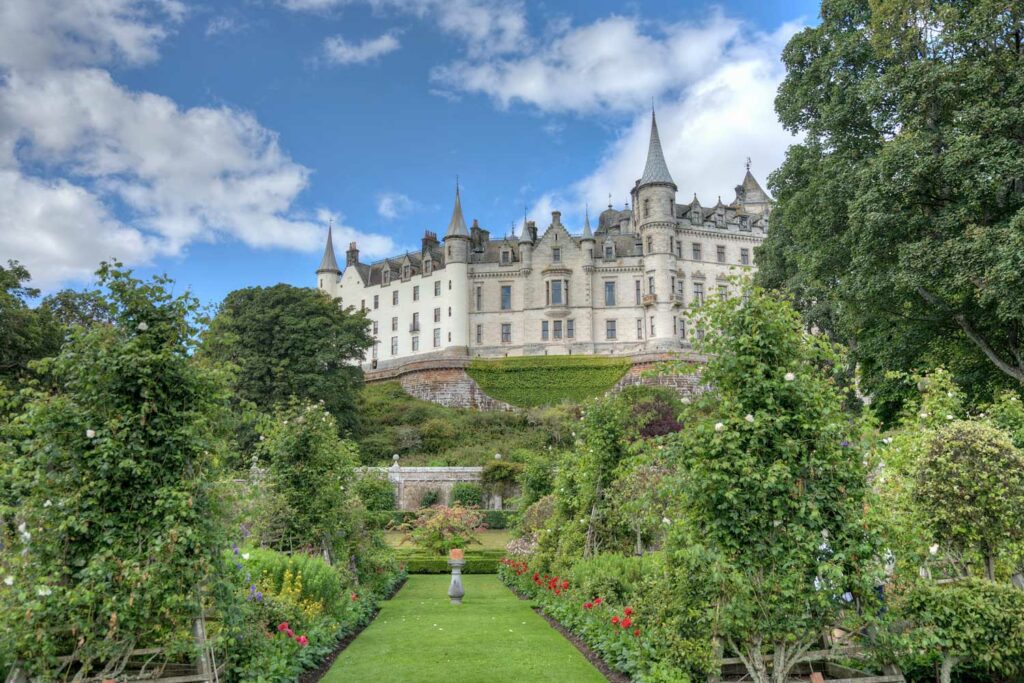
Caithness castles
The county of Caithness has a cluster of medieval castles strewn mainly along its coastline. Some of the most striking ruined fortresses are Castle Sinclair Girnigoe and Old Keiss Castle which flankthe expansive white sands of Sinclair Bay, or Reiss beach as it’s known locally. These castles date from the 15th and 16th centuries respectively and were, as with many others, likely built on the site of a more ancient fortress. The coastline around this area played a vital defence role against potential Nazi invasion during the Second World War.
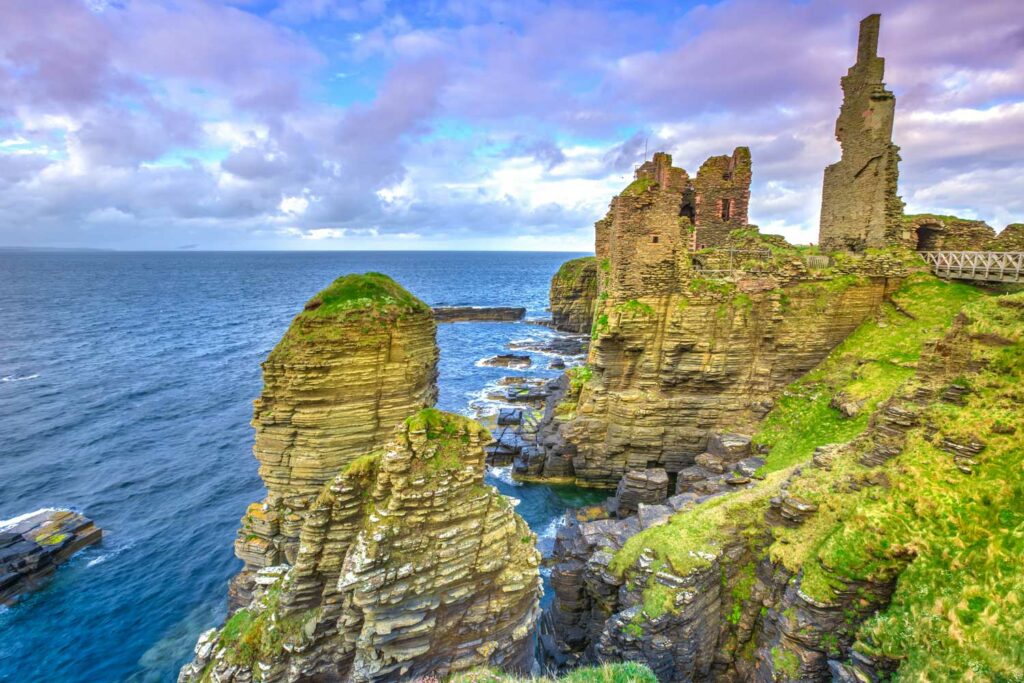
To the south of Sinclair Bay, the Castle of Old Wick is atmospheric ruin situated on a narrow rocky promontory jutting into the sea. Although the surviving structure dates from the 14th century, it is believed that a fort was located here as far back as the 1100s. And north of the Bay, Bucholie Castle is another haunting medieval stronghold gradually crumbling into the sea. There are fine coastal walks to be enjoyed if you’d like to get closer to these ancient ruins and soak in the history, the scenery and the sea air!
However, the county also boasts a number of well-preserved castles, some of which are still inhabited. The Castle of Mey was purchased and restored in the 1950s by the late Queen Mother (she much enjoyed spending time there) and is perhaps the jewel in the crown of Caithness castles (pun intended!). Nowadays, King Charles will sometimes holiday there. It’s open to the public and is delightful to visit with charming interiors, walled garden and tearoom which utilises ingredients handpicked from the kitchen garden.
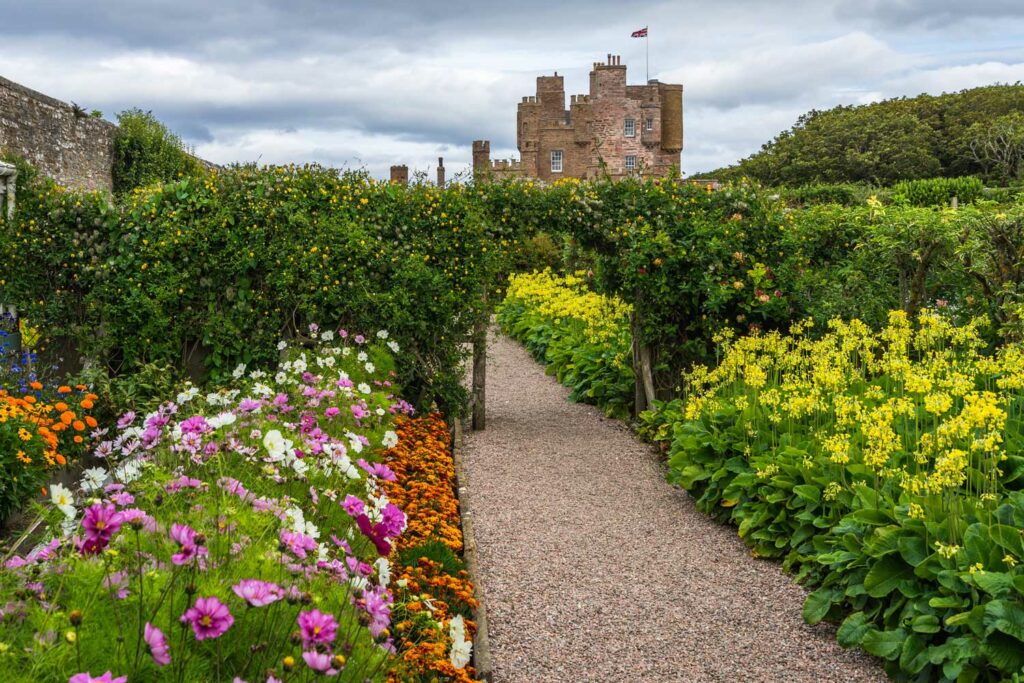
Also perched on the east coast is the 13th century Dunbeath Castle, a fine example of a lived-in Scottish castle. Although it is a private home and not open to the public, the well-tended walled gardens are open to viewings, by appointment, all year round. The 15th century Ackergill Tower is also now a private residence but had for several years been a luxury hotel and events venue; and nowadays Freswick Castle offers accommodation both as a wedding venue or a self-catering let.
Castle Varrich
On the north coast in the Kyle of Tongue National Scenic Area, the ruins of Castle Varrich sit on a hill overlooking the village of Tongue, with views to the towering mountains of Ben Loyal and Ben Hope. Although the remaining structure dates from the 14th century, this ancient seat of the Clan MacKay is believed to be over a thousand years old and it is thought that there are caves underneath the castle which were once inhabited by the MacKays.
Hermit’s Castle
To call this structure a ‘castle’may be stretching the bounds of the architectural category – but we’ll include it anyway! This small, quirky concrete building known as the Hermit’s Castle blends into the rocky shoreline at the beautiful west coast beach of Achmelvich. Apparently, an English architect built it single-handedly around 1950, and spent just a few days in it before departing – never to return!
Ardvreck Castle
The haunting ruins of Ardvreck Castle stand on a grassy promontory extending into Loch Assynt surrounded by the hills of Sutherland. Dating back to the late 15th century, this former MacLeod stronghold was later captured by the Clan MacKenzie who subsequently replaced it with the nearby Calda House, now also a ruin having burnt down in 1737. Right by the roadside on the NC500, it is worth pausing here for a moment; there are interpretation panels which provide more information about the history of this castle and its stories of battle and betrayal.
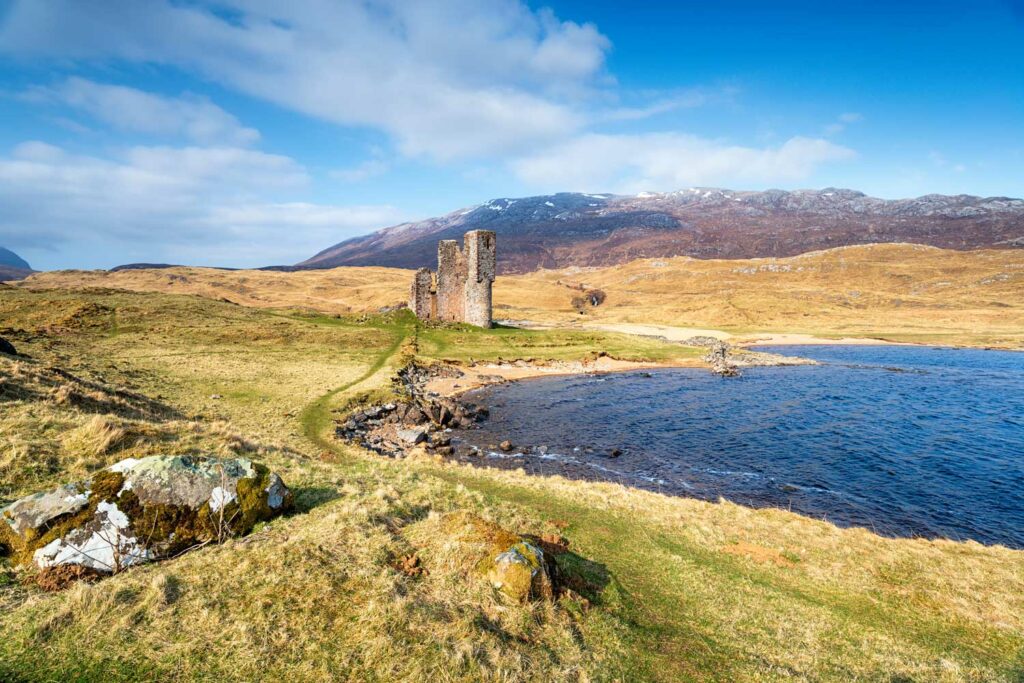
An honourable mention: Eilean Donan Castle
While it may not technically be on the NC500 route, Eilean Donan Castle is just a stone’s throw away so it would be remiss not to mention this iconic 13th century castle. Likely named after the 6th century Irish monk Bishop Donan, this medieval fort has played an important role in history including the 17th and 18th century Jacobite risings. Having lain semi-derelict for almost 200 years, it has now been restored to its former glory and you can take tours of the castle (arriving early in the day is advisable as it is a popular attraction) and there is also a café and shop to visit.
